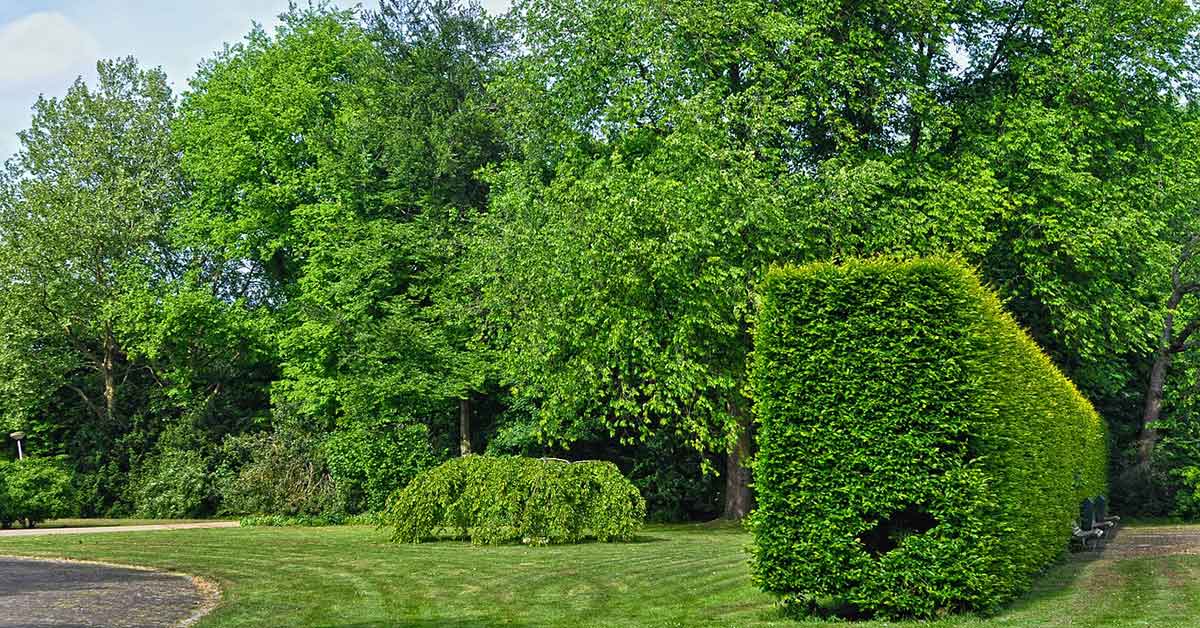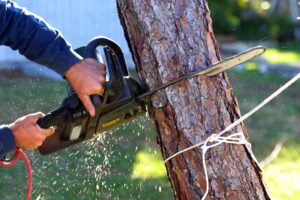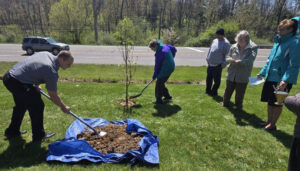Florida Tree Removal Laws: A Comprehensive Guide (2024 Update)
Trees play a vital role in Florida’s environmental health, providing shade, improving air quality, and adding to property values. However, the need for tree removal arises when trees pose a risk, become diseased, or interfere with development and property management. The state of Florida has both statewide and local regulations for tree removal, ensuring that trees are protected while also allowing property owners to maintain their land responsibly. This guide provides a detailed overview of Florida’s tree removal laws, including state guidelines, city-specific ordinances, regulations for residential and commercial properties, and legal cases that have shaped these laws.
Overview of Florida Tree Removal Laws
The regulation of tree removal in Florida falls under both state law and local ordinances. In 2019, Florida passed Florida Statute Section 163.045, also known as the Private Property Rights Protection Law, which standardizes the tree removal process on residential properties across the state. However, local governments can still enforce additional rules, particularly for commercial properties, protected species, and replacement requirements.
Florida Statute Section 163.045: A Breakdown
Florida Statute Section 163.045 is a statewide law allowing property owners to remove or trim trees without a permit under certain conditions. This law is aimed at simplifying the process of tree removal on private residential properties to protect life and property.
Conditions for Removal Without a Permit
The law permits tree removal or pruning without a permit if:
- A certified arborist or licensed landscape architect determines the tree presents a danger to persons or property.
This evaluation by a qualified professional is critical to using this statute legally. It requires proper documentation of the tree’s hazardous status, including photos, written evaluations, and the professional’s credentials.
Limitations of the Law
While this law simplifies the permit process, there are important limitations:
- Applies Only to Residential Properties: Commercial, public, and multi-family properties are not covered under F.S. Section 163.045.
- Certified Professional Assessment: Property owners cannot arbitrarily remove trees; the need for removal must be certified by a qualified expert.
For more information, you can review the full statute at the Florida Legislature’s official website: F.S. Section 163.045.
Local Ordinances: City-Specific Tree Removal Laws in Florida
Each municipality in Florida has its own set of local regulations in addition to the state laws. These ordinances often vary by tree size, type, and property category.
City-by-City Breakdown of Tree Removal Laws
| City/County | Residential Permit Rules | Commercial Permit Rules | Protected Species/Heritage Trees |
|---|---|---|---|
| Miami-Dade County | Permit required for non-hazardous trees | Strict regulations, detailed site plan required | Native and historic species are protected |
| Orlando (Orange) | No permit for trees certified as hazardous | Permit needed for most removals | “Grand” and “specimen” trees require permits |
| Tampa (Hillsborough) | Permits required for protected and healthy trees | Must have a detailed removal and replacement plan | Special care for “Grand Trees” over 30” DBH |
| Jacksonville (Duval) | Removal of healthy trees requires permit | Permit required, emphasis on urban canopy | Heritage trees require extensive justification for removal |
| Tallahassee (Leon) | Certain protected species require permits | Stringent rules for commercial removal | Special protection for longleaf pine and other native species |
Each city has its own definition of “protected,” “heritage,” “specimen,” or “Grand” trees, with unique requirements for permits, replacement, and mitigation. Always check your local government’s official website for the most updated information.
Tree Removal Laws for Residential vs. Commercial Properties
Residential Property Tree Removal Regulations
Residential tree removal in Florida generally follows F.S. Section 163.045, allowing property owners to remove trees without a permit if they pose a danger, as long as a certified professional verifies the need. However, local ordinances may add further rules:
- Protected Trees: Local governments often have a list of protected species, which require permits for removal regardless of their condition.
- Replacement or Mitigation: Many cities require the planting of a new tree or a mitigation fee to compensate for the loss of a protected or mature tree.
- Homeowner Association Rules (HOAs): Property owners should also check with their HOA, as HOAs can have additional regulations and guidelines for tree removal.
For example:
- Tampa, FL: In Tampa, homeowners must apply for a permit to remove any tree classified as “protected” unless it’s deemed hazardous by a certified arborist. Replacement or mitigation fees are required, especially for larger trees known as “Grand Trees.”
Commercial Property Tree Removal Regulations
For commercial properties, the rules are often stricter and more complex, with detailed requirements that go beyond the statewide statute:
- Permits Required for All Removals: Unlike residential properties, commercial property owners must usually obtain permits for all tree removals, regardless of the tree’s condition.
- Comprehensive Site Plan and Tree Survey: The application process for a permit often includes a detailed tree survey showing the type, location, and condition of all trees on the property.
- Mitigation and Replacement Requirements: Commercial properties may face more stringent tree replacement or mitigation fees than residential properties, with ratios for replacement often based on the tree’s size and species.
For example:
- Miami-Dade County, FL: Commercial property owners are required to submit an extensive site plan and obtain a permit for any tree removal. Protected native species have additional requirements, and mitigation often includes planting replacement trees on or off the site or making a contribution to a tree mitigation fund.
Protected Trees and Special Ordinances in Florida
Certain tree species in Florida are protected under state or local regulations, and their removal is strictly regulated. These ordinances ensure that certain “heritage,” “specimen,” or “Grand” trees are preserved due to their ecological or historical significance.
List of Common Protected Trees
| Species | Common Ordinance Requirements |
|---|---|
| Live Oak (Quercus virginiana) | Often protected due to size and historical value |
| Southern Magnolia (Magnolia grandiflora) | Removal requires permit and replacement trees |
| Bald Cypress (Taxodium distichum) | Typically protected, especially in wetland areas |
| Gumbo Limbo (Bursera simaruba) | May be protected in coastal zones |
| Slash Pine (Pinus elliottii) | Subject to permit and replacement requirements |
The specific rules for protected trees vary greatly by location. For example:
- In Orlando, a “Grand Tree” is any tree with a DBH of over 30 inches, and removing it requires a permit, with stringent requirements for replacement and mitigation.
- In Tallahassee, the longleaf pine has special protection as it is a native species essential to the local ecosystem.
Removal Exceptions for Protected Trees
Even if a tree is classified as protected, exceptions for removal may be made in certain cases, such as:
- Diseased or Dangerous Trees: If an arborist determines that a protected tree is diseased or presents a danger, local ordinances often allow for its removal.
- Storm Damage and Emergencies: If a tree is damaged by a storm or poses an immediate risk to property or life, an emergency removal may be conducted, with the permit process expedited.
Application Process for Tree Removal Permits
The process of applying for a permit generally includes the following steps:
Steps for Residential Permit Application
- Consult Local Ordinance: Check your city or county’s specific tree removal guidelines.
- Obtain a Certified Arborist Report: If the tree is considered hazardous, have a certified arborist or landscape architect assess the tree.
- Submit Application Form: Access and complete the tree removal application form from your local government’s website or environmental division office.
- Pay Applicable Fees: Pay the required fee, which varies based on tree type, size, and city regulations.
Steps for Commercial Permit Application
- Prepare a Tree Survey or Site Plan: A detailed survey showing all trees on the property, their species, and DBH.
- Application Submission and Fee Payment: Submit the permit application with the appropriate documentation and payment.
- Tree Replacement or Mitigation Plan: Submit a plan outlining how the removed trees will be replaced or how the mitigation fees will be handled.
Notable Legal Cases and Precedents
There have been several legal cases that have influenced Florida’s tree removal laws. For example:
Smith v. City of Miami Beach (2020)
A residential homeowner challenged the city’s denial of a tree removal permit after their application was denied, even though the tree was certified as hazardous by an arborist. The court sided with the homeowner, reinforcing the applicability of F.S. Section 163.045 and the property owner’s right to remove a tree deemed dangerous by a certified professional.
Developers v. Orange County (2019)
A group of developers argued against stringent tree replacement requirements that were placed on commercial projects. The court upheld Orange County’s ability to require both tree replacement and mitigation fees, emphasizing the need to maintain the urban canopy.
Penalties for Illegal Tree Removal
Failure to obtain the necessary
permit or follow local regulations can result in serious consequences:
- Fines: Ranging from $500 to over $10,000 per tree, depending on the city and type of violation.
- Replanting Requirements: Property owners may be required to plant multiple new trees to replace the illegally removed tree.
- Criminal Charges: In extreme cases, illegal tree removal can result in criminal charges, especially for protected species or intentional damage to public trees.
For example:
- Broward County imposes fines of up to $5,000 per illegally removed tree, along with additional mitigation requirements.
Resources for Property Owners and Developers
To ensure compliance with Florida’s tree removal laws, the following resources can be useful:
- Florida Department of Agriculture and Consumer Services: For guidance on arborist certifications – FDACS
- Local Government Environmental Divisions: Check your city or county’s website for specific ordinances, application forms, and guidance on tree removal.
- International Society of Arboriculture (ISA): To find a certified arborist – Find an Arborist
Conclusion
Navigating Florida’s tree removal laws requires an understanding of both statewide regulations and local ordinances. While F.S. Section 163.045 allows for simplified removal of dangerous trees on residential properties, each city has its own unique rules, especially for protected species and commercial properties. Always consult local laws, hire a certified professional when needed, and follow proper permit procedures to avoid fines and penalties while contributing to the preservation of Florida’s valuable urban canopy.






